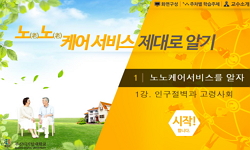In the history of world literature, a free-verse movement started from the battle with the antecedent cultural custom, the fixed form of verse, handed down from ancient times in certain cultures. The various grounds supporting this hypothesis can be f...
http://chineseinput.net/에서 pinyin(병음)방식으로 중국어를 변환할 수 있습니다.
변환된 중국어를 복사하여 사용하시면 됩니다.
- 中文 을 입력하시려면 zhongwen을 입력하시고 space를누르시면됩니다.
- 北京 을 입력하시려면 beijing을 입력하시고 space를 누르시면 됩니다.
https://www.riss.kr/link?id=A106051412
-
저자
이명찬 (덕성여자대학교)
- 발행기관
- 학술지명
- 권호사항
-
발행연도
2019
-
작성언어
Korean
-
주제어
시조부흥운동 ; 시조 ; 가사 ; 자유시 운동 ; 자유시 ; 운율 ; 상징시 ; 정형률 ; he Revival Movement of Sijo ; Sijo ; Gasa ; free-verse movement ; free-verse ; verse ; symbolical poetry ; fixed rhythm
-
등재정보
KCI등재
-
자료형태
학술저널
- 발행기관 URL
-
수록면
199-237(39쪽)
-
KCI 피인용횟수
4
- DOI식별코드
- 제공처
-
0
상세조회 -
0
다운로드
부가정보
다국어 초록 (Multilingual Abstract)
At the early stage of the history of our modern poetry, since there is no model of poetry to fight and overcome, there was an extreme pattern, such as being bound by the rate of the number of letters like 4-4 or 7-5 or clinging to prose poetry. The modernization of poetry did not progress through the stages from the fixed form of verse through free verse to prose poetry as often said. The free verses we see today were born through the process of ambiguous and tough seeking between ‘making a fixed form of verse’ based on the rate of the number of letters and ‘writing prose poetry.’ “The Revival Movement of Sijo” in the mid-1920s can be said to be a literary movement born in the process in which our early literary people who had been swayed between ‘making a fixed form of verse’ and ‘writing prose poetry’ doubted if Sijo would be the traditional fixed form of verse they should fight against. The discussion about Sijo, which began like this was concluded by Garam Lee Byong-gi in the 1930s, but that was not at a satisfactory level. What leaves something to be desired the most is that the method for reading Sijo was not developed and popularized formally, for it means that the golden opportunity was lost to completed a fixed form of verse in our own spoken and written language. Therefore, in the future, school education should put an end to the exploration of literary history in 100 years of modern times by paying attention to the job of developing a model of reading Sijo.
In the history of world literature, a free-verse movement started from the battle with the antecedent cultural custom, the fixed form of verse, handed down from ancient times in certain cultures. The various grounds supporting this hypothesis can be found in the European countries that guided the modern times and our neighbors, like Japan and China. The problem is Korea. The orthodoxy till now is that early poets, including Ju Yo-han, Kim Eok, and Hwang Seok-woo led the free-verse movement, following the movement for destroying the tradition in French symbolical poetry. However, if someone asks us, “What is the traditional form of verse our modern literary movement destroyed?”, we do not have an answer. It is easy to answer Sijo or Gasa as an example, but strictly speaking, both were styles that had not reached a fixed form of verse. Sijo had a critical limitation that it is not a subject of literary reading but lyrics of a song, while Gasa was very likely to reach a fixed rhythm in that it is a genre read aloud, but it died out, not being able to become a fixed form of verse as it moved on the road of lengthening like Travel Gasa or Exile Gasa.
At the early stage of the history of our modern poetry, since there is no model of poetry to fight and overcome, there was an extreme pattern, such as being bound by the rate of the number of letters like 4-4 or 7-5 or clinging to prose poetry. The modernization of poetry did not progress through the stages from the fixed form of verse through free verse to prose poetry as often said. The free verses we see today were born through the process of ambiguous and tough seeking between ‘making a fixed form of verse’ based on the rate of the number of letters and ‘writing prose poetry.’ “The Revival Movement of Sijo” in the mid-1920s can be said to be a literary movement born in the process in which our early literary people who had been swayed between ‘making a fixed form of verse’ and ‘writing prose poetry’ doubted if Sijo would be the traditional fixed form of verse they should fight against. The discussion about Sijo, which began like this was concluded by Garam Lee Byong-gi in the 1930s, but that was not at a satisfactory level. What leaves something to be desired the most is that the method for reading Sijo was not developed and popularized formally, for it means that the golden opportunity was lost to completed a fixed form of verse in our own spoken and written language. Therefore, in the future, school education should put an end to the exploration of literary history in 100 years of modern times by paying attention to the job of developing a model of reading Sijo.
참고문헌 (Reference)
1 정우택, "황석우연구" 박이정 2008
2 김용직, "현대시론" 한국방송통신대학교출판부 2013
3 조창환, "한국현대시의 운율론적 연구" 일지사 1986
4 정한모, "한국현대시문학사" 일지사 1974
5 이승하, "한국현대시문학사" 소명출판 2005
6 이숭원, "한국현대시 연구의 맥락" 태학사 2014
7 권영민, "한국현대문학사1" 민음사 2002
8 김윤식, "한국문학사" 민음사 1981
9 조윤제, "한국문학사" 탐구당 1976
10 김용직, "한국근대시사1" 새문사 1983
1 정우택, "황석우연구" 박이정 2008
2 김용직, "현대시론" 한국방송통신대학교출판부 2013
3 조창환, "한국현대시의 운율론적 연구" 일지사 1986
4 정한모, "한국현대시문학사" 일지사 1974
5 이승하, "한국현대시문학사" 소명출판 2005
6 이숭원, "한국현대시 연구의 맥락" 태학사 2014
7 권영민, "한국현대문학사1" 민음사 2002
8 김윤식, "한국문학사" 민음사 1981
9 조윤제, "한국문학사" 탐구당 1976
10 김용직, "한국근대시사1" 새문사 1983
11 정병욱, "한국고전시가론" 신구문화사 1977
12 이명찬, "한국 현대시의 운(율)문적 성격에 대한 성찰" 한국문학교육학회 (50) : 33-56, 2016
13 한계전, "한국 현대시론사 연구" 문학과지성사 1998
14 김대행, "한국 시가 구조 연구" 삼영사 1976
15 김대행, "운율" 문학과지성사 1984
16 서영채, "아첨의 영웅주의―최남선과 이광수" 소명출판 2011
17 염상섭, "시조와 민요"
18 오세영, "시론" 서정시학 2013
19 현철, "시란 무엇인가"
20 조동일, "소설문학" 소설문학사 1987
21 정우택, "새 민족문학사 강좌2" 창비 2009
22 이명찬, "산문시론 시고(試考)" 한국시학회 (45) : 217-246, 2016
23 강영미, "배제의 논리로 구축된 ‘시조부흥론’ ―『조선문단』과 『동광』수록 시조를 중심으로" 한국시학회 (39) : 59-88, 2014
24 이광수, "문학이란 하오"
25 김동환, "문사방문기"
26 주요한, "노래를 지으시려는 이에게"
27 곽명숙, "김억의 ‘조선적 시형’에 대한 고찰" 인문과학연구소 (55) : 263-290, 2008
28 이병기, "가람문선" 신구문화사 1966
29 이상화, "詩의 生活化―觀念表白에서 意識實現으로"
30 황석우, "詩話"
31 김기진, "詩歌의 音樂的方面"
32 김억, "詩形의 音律과 呼吸"
33 김억, "詩壇一年"
34 이광수, "病窓語 25-31"
35 이광수, "民謠小考.1"
36 김억, "格調詩形論小考"
37 황석우, "朝鮮詩壇의 發足點과 自由詩"
38 최남선, "朝鮮國民文學으로의 時調"
39 조윤제, "朝鮮 詩歌의 硏究" 을유문화사 1948
40 이병기, "時調의 發生과 歌曲과의 區分"
41 이병기, "時調의 現在와 將來"
42 안자산, "時調의 淵源"
43 조윤제, "時調의 本領"
44 이병기, "時調와 그 硏究"
45 손진태, "時調와 時調에 表現된 朝鮮사람"
46 이병기, "時調란 무엇인고"
47 이병기, "時調는 革新하자"
48 이병기, "時調鑑賞과 作法"
49 양건식, "時調論―그復興과改良을促함"
50 최남선, "時調胎盤으로서의 朝鮮民性과 民俗"
51 이은상, "時調短型芻議―時調形式論의 一部"
52 이병기, "時調源流論"
53 김동환, "時調排擊小義"
54 이은상, "時調問題小論"
55 이은상, "時調創作問題"
56 조윤제, "時調 字數考"
57 김기진, "文藝時評"
58 이광수, "文學講話.3"
59 이병기, "律格과 時調"
60 김영진, "國民文學의 意義"
61 이광수, "六堂 崔南善論"
62 김억, "作詩法"
63 조운, "丙寅年과 時調"
64 양주동, "丙寅 文壇 槪觀"
65 조연정, "1920년대의 시조부흥론 재고(再考) - ‘조선’ 문학의 표상과 근대 ‘문학’의 실천 사이에서 -" 한국현대문예비평학회 (43) : 137-166, 2014
동일학술지(권/호) 다른 논문
-
근대 사회와 그 속의 자신을 진단하는 지식인-「AU MAGASIN DE NOUVEAUTES」를 중심으로
- 한국시학회
- 김지우
- 2019
- KCI등재
-
루비(ルビ), ‘言’과 ‘語’의 경계-정지용의 이중어 인식과 근대시 창작
- 한국시학회
- 김동희
- 2019
- KCI등재
-
1930년대 후반기 근대적 주체의 '동정(sympathy)'의 발현 양상에 대한 한 연구
- 한국시학회
- 김나래
- 2019
- KCI등재
-
이상(李箱) 시와 다중-어(多重-語) 에크리튀르의 상상력
- 한국시학회
- 홍성희
- 2019
- KCI등재
분석정보
인용정보 인용지수 설명보기
학술지 이력
| 연월일 | 이력구분 | 이력상세 | 등재구분 |
|---|---|---|---|
| 2025 | 평가예정 | 재인증평가 신청대상 (재인증) | |
| 2022-01-01 | 평가 | 등재학술지 선정 (계속평가) |  |
| 2021-12-01 | 평가 | 등재후보로 하락 (재인증) |  |
| 2018-01-01 | 평가 | 등재학술지 유지 (등재유지) |  |
| 2015-01-01 | 평가 | 등재학술지 유지 (등재유지) |  |
| 2011-01-01 | 평가 | 등재학술지 유지 (등재유지) |  |
| 2009-01-01 | 평가 | 등재학술지 유지 (등재유지) |  |
| 2006-01-01 | 평가 | 등재학술지 선정 (등재후보2차) |  |
| 2005-05-26 | 학술지등록 | 한글명 : 한국시학연구외국어명 : The Korean Poetics Studies |  |
| 2005-01-01 | 평가 | 등재후보 1차 PASS (등재후보1차) |  |
| 2003-01-01 | 평가 | 등재후보학술지 선정 (신규평가) |  |
학술지 인용정보
| 기준연도 | WOS-KCI 통합IF(2년) | KCIF(2년) | KCIF(3년) |
|---|---|---|---|
| 2016 | 0.67 | 0.67 | 0.74 |
| KCIF(4년) | KCIF(5년) | 중심성지수(3년) | 즉시성지수 |
| 0.74 | 0.71 | 1.366 | 0.11 |




 KCI
KCI DBpia
DBpia






